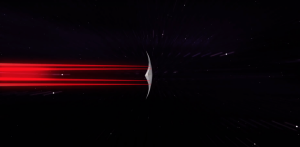
The Atacama Large Millimeter/submillimeter Array (ALMA) in northern Chile’s Atacama desert.
Credit: ESO/B. Tafreshi (twanight.org)
Unexplained phenomena, strange behavior, and what kinds of signals might extraterrestrials generate?
Day Two of Breakthrough Discuss was held at Stanford University ending a ground-breaking conference that brought together the world’s leading astronomers, engineers, astrobiologists, and astrophysicists.
TRAPPIST-1 system
The meeting included a review of TRAPPIST-1, which has seven temperate planets, including three in the habitable zone. The planets were discovered using small ground-based telescopes, and there were “so many transits we couldn’t make sense of them,” noted astronomer Michaël Gillon.

NASA’s Spitzer Space Telescope has revealed the first known system of seven Earth-size planets around a single star.This artist’s concept allows us to imagine what it would be like to stand on the surface of the exoplanet TRAPPIST-1f, located in the TRAPPIST-1 system in the constellation Aquarius.credit:
Credit: NASA/JPL-Caltech
Gillon described how observations from several telescopes were used to study the TRAPPIST-1 system, including the Kepler spaceborne observatory to confirm the existence of the planets, as well as the Spitzer space telescope to ascertain their orbits.
Similarly, a suite of telescopes, including Hubble and the James Webb Space Telescope, could be used in the future to search for signs of water and atmospheres on planets that may be detected by the next generation of giant ground-based telescopes.
Unexplained phenomena
A wide-ranging discussion, chaired by the SETI Institute’s Jill Tarter, focused on how studies of unexplained phenomena might lead to new discoveries in astrophysics, or possible evidence of activity by civilizations inhabiting other star systems.
Panelists underscored the odd variations in brightness of a star to searches for stars that might suddenly disappear and described a variety of creative ways to search large, time-domain survey datasets for events of interest.
Also discussed is how modern machine learning algorithms could allow looks for strange behavior in data without making presuppositions about the kinds of signals extraterrestrials might generate. A great deal of work is required to rule out natural astrophysical explanations before resorting to claims of intelligent aliens
Proposed during the meeting is revision to the Rio Scale that is used to assess the credibility of ET claims.
Starshot thinking
The meeting included updates on the ambitious Breakthrough Starshot plan to send spacecraft to nearby stars.
Explained by experts:
- How a gram-scale camera attached to a sail propelled by a powerful ground-based laser beam might reach Proxima b during our lifetime, traveling at 20 percent of the speed of light. Feasibility studies will be completed during the next five years, potentially leading to the construction of a kilometer-scale ground station, and the launch of many small, relatively inexpensive spacecraft to explore nearby star systems.
- Starshot technology could enable craft to travel from Earth to the Moon in an hour, to Mars in under a day, and to nearby stars in a couple of decades.
- There are materials science and engineering challenges in designing a sensor package to fit on a thin silicon wafer, and returning data to Earth, but there is optimism that ongoing technological developments would make this “watershed moment in human history” possible in the near future.
- A “photogravitational assist” technique might enable a spacecraft traveling at 20 percent of the speed of light to use photons from the Alpha Centauri system as a brake to enter orbit rather than rapidly flying by.
Spectral features
Closing out the day, other speakers discussed how a suite of observations, both remote, and in-situ, could detect spectral features of vegetation, light glinting from oceans, and signs of water and oxygen in planetary atmospheres.
The conference also closed with a panel on science goals and instrumentation for Breakthrough Starshot.
Breakthrough Discuss was hosted by Stanford University’s Department of Physics and the Harvard-Smithsonian Center for Astrophysics and sponsored by the Breakthrough Initiatives. Breakthrough Discuss is an annual academic conference focused on life in the Universe and novel ideas for space exploration.
Breakthrough Initiatives are a suite of scientific and technological programs exploring the big questions around life in the Universe, such as are we alone? What are the nearest habitable planets? And can we become an interstellar civilization?
For more information, go to:
https://breakthroughinitiatives.org
Note: All videos from the two-day event are available to view on the Breakthrough Facebook page. You can view by following this link:
https://m.facebook.com/pg/BreakthroughPrize/videos/
Special thanks to Kayla Engebretsen for information used in this article.




